|
|
| Oct 25 |
Archive for the 'Research' Category
Filled under: Maze Running, Novels, Research, Writing | Friday, October 25th, 2013 |
When I write adventures set in the Scottish landscape, I always research the place I’m writing about. Caves, mountains, castles, cliffs, rivers, seashores, mazes – I’ve visited them all, to make sure that I’m describing the atmosphere and the location correctly in the book. I do this when it’s a real place (Traquair Maze, Dunvegan Castle, Smoo Cave) or when it’s an invented place (Dorry Shee forest, the village of Clovenshaws, the campsite at Taltomie, the Keystone Peak.) And yes, I know, I can’t visit an imaginary place, but I visit places like it and I create patchwork of all of them.
So, I always visit the locations. If you live there or if you go there on holiday, and you’ve read one of my books, you should be able to recognise the location, and feel like the story could really happen there.
But the one thing I hardly ever do is visit the location at the right time of year. I always seem to be writing the novel urgently at one time of the year even though the story is set at another time of year, or else I can only get to the other end of the country to research during the school holidays but the story is set in term time…
I researched the caves and cliffs of Storm Singing, which is set in the autumn, in February (and that is a COLD time of year to be on the Sutherland coast…) I researched the forests and islands of Wolf Notes, which is set in the spring, in the autumn. I researched the waterfall scene in Maze Running, which is set in the spring, on Christmas Eve. That was cold too. I researched the mountains of Rocking Horse War, which is set in the summer (so that my characters didn’t freeze) in the late autumn, when my family and I nearly did freeze.
And for First Aid for Fairies, which is set in midwinter, we visited the Ring of Brodgar in the summer holidays. Which sounds like it might be the only time I didn’t make my family shiver while researching a novel, but actually, it was windy and cold in Orkney that day and we had to shelter behind the stones to eat our sandwiches…
However, despite the shivers and the extra gloves, researching at the wrong time of year is fine for paths, rocks, walls, caves and castles, which are there all year round. But it’s not ideal for local plants, flowers and trees, which change with the seasons.
In the adventure I’m writing right now, trees are very important to one of my characters, so I really wanted to discover exactly what the trees in the right area of Scotland are like at exactly the right time of year.
Both books I’m writing this month – the teen thriller I’m editing and the adventure book I’m about a quarter of the way through writing – are set in October. And this IS October. So I’m really lucky that when I’m checking what time it gets dark in Edinburgh next week, which is when the thriller is set, I’ll just be able to look out of my window. And when I wanted to know what a birch wood in Speyside looks like during the tattie holidays, I just went up last week, and took a few photos and a lot of notes (in the rain and wind, obviously!)
So, for the first time, these books will be researched, at least partly, in not just the right season, not just the right month, but even the right week! Which I hope will make the stories even more convincing. Even if all my notebooks are a bit soggy…
Now, I’ve done the research, I’d better get on with writing the adventure!
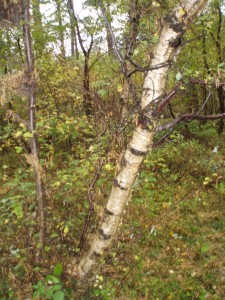 Meg’s Widd, at exactly the right time of year! 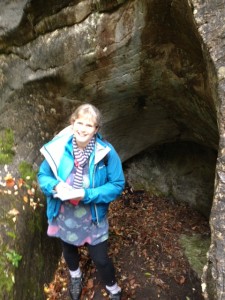 A mysterious cave, at exactly the right time of year! (And it was raining, which is the best weather for the monster who might live here…) |
| Sep 04 |
Archive for the 'Research' Category
Filled under: Maze Running, Myths, legends, folklore, Novels, Picture Books, Research, Uncategorized, Writing | Wednesday, September 4th, 2013 |
I’ve now written six books with wolves inside, five of which have a wolf on the cover, and two of which even have a wolf in the title.
Just last week, the wolfiest book of all was published. The Hungry Wolf is a retelling of all the best ‘daft wolf tries to eat clever lamb’ stories I could find, stunningly illustrated by Melanie Williamson.
But there are lots of wolves in my other books too:
There’s a helpful wolf in the last story in Girls, Goddesses and Giants, my recent collection of heroine stories.
There’s a smooth-talking sharp-toothed wolf in Little Red Riding Hood.
Sylvie, the rather snappy wolf girl, appears in both Wolf Notes, the second novel in the First Aid series, and Maze Running, the last of the series.
And I have a collection of Winter’s Tales coming out later this year (just in time for the first frost and snow!), which has a lovely lemon-yellow wolf on the cover and a howling wolf story inside.
There is no one other creature, apart from possibly 11 year old girls, that I have written about as often as I have written about wolves.
So what is it about wolves that draws me and so many other writers to them? (Many of my favourite kids’ books are about wolves, like Michelle Paver’s Wolf Brother, or werewolves, like Roy Gill’s Daemon Parallel… To save me listing lots more, here are seven of my favourite wolf books for adults from the Scottish Book Trust website…)
So, what is it about wolves?
There are many theories about people’s fascination with wolves, but I think I know why I’m drawn as a writer to stories about wolves, why I love retelling ancient wolf stories and creating new wolf stories.
Wolves are both cool and scary. They are beautiful creatures, but they are also dangerous. And what’s so handy for writers is that EVERYONE has a reaction to wolves. Wolves are story shorthand for lots of useful, dramatic things. We don’t need to explain wolves. So wolves are a bit like dragons, which are also fascinating, beautiful and very dangerous. Perhaps wolves are the real world equivalent of dragons…
In stories, wolves can be equally convincing and equally useful to the plot as either a friend or an enemy (or, like Sylvie in Wolf Notes, as a mix of both.) So wolves can be tricksters: never entirely trustworthy, just as likely to be a baddie as a goodie, and very likely to move the story in unpredictable ways. That’s why one of my favourite mythical wolves is Fenrir, the son of Viking trickster god Loki.
One of the reasons I tell so many wolf stories is that so many cultures tell wolf stories. Almost every part of the world has had wolves as a main predator at some time, so wolves appear in lots of stories. This is another similarity between wolves and dragons, which are also an almost universal story baddie. (I know Irish dragon stories and Chinese dragon stories, Greek dragon stories and Scandinavian dragon stories; but I also know native American wolf stories and Viking wolf stories, Scottish wolf stories and Sanskrit wolf stories.) It is fascinating to see how the role and character of the wolf changes across cultures: almost always a baddie in Europe, often a wise goodie in native American culture.
I have a personal reason for feeling strongly about wolf stories too. I used to be scared of dogs, ‘cross the road if a dog was walking towards me on a lead’ type scared. Then I spent months researching wolves’ social organisation and intelligence for Wolf Notes. Once I understood a bit about wolves, I suddenly realised that I understood a bit about dogs too – mainly that they weren’t remotely interested in me because I was neither another dog nor their owner / pack leader – so I stopped being scared of them. Which just shows that writing books about wolves can change your life.
So, now I have six wolf books on my shelves. I wonder what wolf I will write next…
What animal are you particularly drawn to writing (or reading) about, and do you know why?
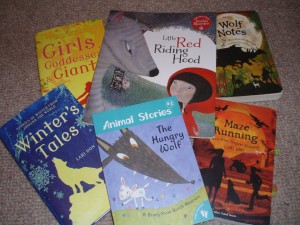 a pack of wolves |
| Jul 08 |
Archive for the 'Research' Category
Filled under: Heroines and heroes, Monsters (defeating!), Myths, legends, folklore, Novels, Picture Books, Research | Monday, July 8th, 2013 |
I have a bit of a traffic jam of books waiting to be published over this summer and autumn.
It looks like I’ve been writing a lot of myths, legends and magic this year, but in fact, THIS year I’ve mostly been writing novels. It was last year and the year before that I was researching and writing lots of myths and legends, but some books take a while to be edited and illustrated. However, I think they are all very much worth waiting for.
So here are the books being published in 2013, and possibly a hint about what’s coming up in 2014:
Girls, Goddesses and Giants: Tales of Heroines from Around the World (A&C Black, July 2013)
This is my first ever collection of myths and legends, and I’m so proud of it. I have always been slightly disappointed that so many really exciting adventure stories are about boys, so I’ve spent years searching for authentic old stories with girls who fight their own battles. And now here are all my favourite heroines gathered together in one book! There is a Japanese girl who meets a sea monster, a Viking warrior who braves ghosts, a Hindu goddess with 10 arms, a Sumerian goddess who meets 52 monsters in one journey, and an early version of Little Red Riding Hood which I’m sure will surprise you! This book is illustrated beautifully by Francesca Greenwood.
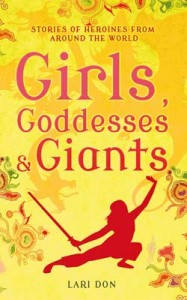
Masha and the Bear & The Hungry Wolf (Barefoot Books, August 2013)
The third and fourth books in the Animal Stories series I’ve written for Barefoot Books, short chapter books retelling traditional tales from around the world, designed for newly independent readers. Melanie Williamson’s amazing pictures bring these stories to life beautifully.
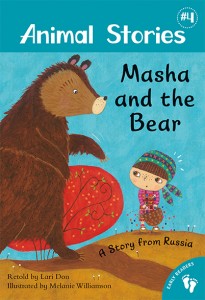
Masha and the Bear is about a little girl who gets lost in the forest, then gets trapped by a bear in a cave. But she doesn’t need a woodcutter or hunter to save her, she gets home all on her own using brains and baking skills!
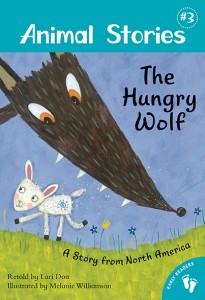
The Hungry Wolf is about a wolf who wants to eat a little lamb, and about all the ways the tricky little lamb fools the wolf and saves herself. It’s a combination of many of my favourite trickster tales, and was great fun to write!
Breaking The Spell: Stories of Magic and Mystery from Scotland (Frances Lincoln, September 2013)
I am so excited about this book – it’s a collection of all my favourite Scottish stories, illustrated by the fabulous Cate James. There are selkies, kelpies and fairies, but also witches, warriors, riddles and baby monsters. There are stories you might know, and stories I’m sure you’ll never have heard before, and one story that comes directly from my own family’s lore. And you might even recognise where the inspiration for some of my novels comes from…
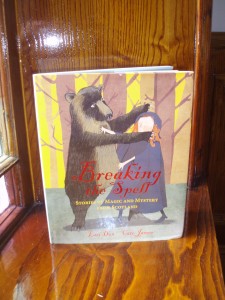
The Magic Word (Picture Kelpies, September 2013)
Not a retelling! This is an original picture book, my only fiction of the year. The Magic Word is about a little girl who can’t be bothered to write her birthday thank you letters, and tries to take some unusual short cuts. The pictures by Claire Keay are really magical, and I’m very much looking forward to reading this to little ones!
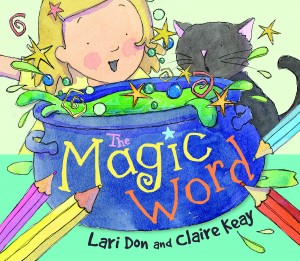 The Magic Word cover Winter Tales: Winter Stories from Around the World (A&C Black, October 2013)
Another collection illustrated by the atmospheric silhouettes of Francesca Greenwood – this time a collection of winter tales. I’ve included some of the oldest and most exciting myths explaining the cycle of the seasons (yes, Persephone is in there, but so are some gods and goddesses you might not have met before) and also lots of folklore and fables about snow, polar bears and wolves from all over the world. I was particularly pleased to find winter tales from the southern hemisphere as well as the north. I hope it will be ideal for sharing stories by a warm fire with snow falling outside!
And this is the one book published in 2013 that I did write this year (earlier on, in that very long winter!) so I don’t have a finished cover to show you yet! But I’m hoping for a wolf…
And next year? Floris Books are bringing out the first three novels in their new young adult list, TeenKelpies, and I’m delighted to say that my next novel will be one of them!
And after that? Well, I’m currently writing a fantasy adventure set in the northeast of Scotland, so if you enjoyed the First Aid for Fairies series, you might want to read this adventure too…
|
| Apr 14 |
Archive for the 'Research' Category
Filled under: Myths, legends, folklore, Novels, Research, Writing | Sunday, April 14th, 2013 |
Here’s the list of questions I’ve been asking myself over the weekend:
Is it true nothing can grow under a holly tree?
Do polar bears roar?
Do reindeer trot?
What do trolls smell like?
When did the Maori first arrive in Aotearoa?
How many pomegranate seeds did Persephone eat?
Do Venezuelans wear ponchos?
What colour are an ibis’s legs?
Do German children put spiders on their Christmas trees?
What was Anat the goddess of?
Where is Finnmark?
Can you make an arrow from dragon tendon?
I’ve been researching all of these questions in order to be sure that the stories I’m retelling for a myth and folklore collection are as accurate and realistic as any book with talking reindeer and warty trolls can ever be. (It’s a collection of winter tales, hence the polar bears and the Christmas trees.)
And I found answers to all of them.
That’s the reason writers love the internet. You can just type in ‘reindeer trot’ or ‘polar bear roar’ and a few clicks later, you have an answer. But the reason writers get annoyed by the internet is that you are then tempted to watch reindeer trotting, or listen to polar bears roaring, and before you know it, you’ve lost an hour of writing time…
So I tend to put together a whole list of questions (like the list above) and do them all at once when I need a break from writing or editing. Then I can concentrate on ticking them off one by one, rather than getting distracted by any particular question.
This works in theory. Though roaring polar bears are quite hard to ignore…
But now that the winter tales book is drafted, checked and sent to my editor, I need something else to write.
So, now for the biggest question of all:
What am I writing next?
The answer is I’M WRITING A NOVEL and I’m starting now. Apart from being fairly sure it doesn’t have any trolls, reindeer or polar bears in it, I can’t tell you what it’s about. But I can tell you that I’m very excited about it….
|
| Feb 21 |
Archive for the 'Research' Category
Filled under: Events, Maze Running, Novels, Readers, Research, Writing | Thursday, February 21st, 2013 |
I answer lots of questions about writing: questions from readers, questions from teachers, questions from journalists, even questions from publishers.
Usually when I’m answering questions at author events, I’m too busy thinking about my answers and trying to be both honest and interesting, while also trying not to fall off a stage or stand on the kids at the front, that I don’t really listen to my own answers. Sometimes afterwards I can’t even remember what the questions were, let alone what answers I gave, because it was all so fast and furious and exciting.
And once I’ve answered questions from journalists, I never read the articles or listen to the interviews. I just give them to a trusted family member or friend, and ask them to check I didn’t say anything really embarrassing.
But I’ve had to watch an interview recently – a rather beautiful interview filmed by my publishers for their website, with me standing in front of the maze which stars in the first chapters of Maze Running, and answering lots of questions about writing the First Aid series. I had to watch it to let Floris know I was happy with it before they made it public.
It was really interesting to see how I reacted to some of the questions. I wasn’t worried about standing on any kids (though there was a danger I might fall off the terrace into the maze!) and I knew the lovely Benedicte would let me have another go if I fluffed an answer, so this is probably about as relaxed as you’ll see me talking about writing.
And I found out a few things about myself as a writer.
Firstly, I found out that I’d be useless on a real quest (I said I’d take a pen and paper with me in case I had an idea for another book. So apparently I’d treat a real quest as a way of getting ideas to write a pretend quest. That would be quite annoying for everyone else on the quest…)
I also discovered that I am naturally polite to landscapes. I felt I had to say that my favourite location was Traquair just in case the maze was offended while I talking about it. It is a really good location, and perfect for the start of that book, but I’ve set books in caves and on cliffs, and those are pretty exciting to research and write about. But I didn’t like to mention that in the interview, in case the maze went in the huff.
I did look a little embarrassed about conning academics with questions about fish and seals when really I was researching mermaids and selkies. (Warning, professors – watch out for sneaky authors!
And you can tell that I really care about the characters. I talk about Yann, Helen, Sylvie, Lavender and even the Master as if they were real people. Which of course they are, in my head.
And probably the greatest truth about writing that I utter in the entire interview is one which I must remember when I’m auditioning those ideas for the next novel: “You can’t have a story until you have a baddie!”
But you can tell how relaxed I was at answering questions from someone I like and trust, because if you watch the whole interview you’ll catch me admitting to not getting it quite right in the first novel (though notice I try to blame my heroine rather than myself…)
I enjoy answering questions about writing because I sometimes discover new things about my own writing process (and occasionally I even remember afterwards!) But most importantly, when readers ask questions, I find out what you like in stories, so that’s what I go home to write! (I wonder if I can tell what my publishers would like me to write next, from the questions in this interview? Maybe I should watch it again…)
Anyway, have a look at the interview, and let me know if I said anything really daft! Perhaps you could consider what questions you would ask yourself about your own writing, and what you think you’d find out?
And has anyone else ever felt the need to be polite to a hedge?
|
| Nov 19 |
Archive for the 'Research' Category
Filled under: Myths, legends, folklore, Picture Books, Readers, Research, Uncategorized, Writing | Monday, November 19th, 2012 |
Retelling an old story which everyone already knows is a bit scary; retelling an old story almost no-one knows is even more of a responsibility.
My first retelling of a well-known fairy tale – Little Red Riding Hood – has just been published. When I was writing it, I had to decide which bits of the many versions of Little Red I would weave together. I did a lot of research, then chose the elements which were most vivid and which worked best in my voice. So I hope I’ve retold a story which you will recognise, but which will also surprise you. A journalist recently asked me how I had changed the story, what spin or twist I had put in, but that wasn’t what I was aiming to do with this retelling. Every major plot element comes from one of the older tales, though I have told the story in my own words, and I’ve tried to make a few of the things which never made sense to me (why doesn’t she realise it’s a wolf in the bed, not her granny, for goodness sake? Can’t she tell the difference?) seem more plausible (she sees more of the wolf each time she lets extra light into the room: opening the curtains, lighting the fire etc.)
But it’s a huge responsibility retelling a story like Little Red Riding Hood. Children already know it, and if you write something which differs from the version they know, they might think it’s wrong! (Which can prompt interesting discussions with kids about how traditional stories are passed on and changed.) Also, this book, with Celia Chauffrey’s gorgeous pictures, might over the years become some children’s very first experience of Red Riding Hood, so when they read other versions they might think my version is the right one and other versions are wrong… That’s a big and scary responsibility!
But I’m very glad that this story of a tricksy, talking, toothy, people-eating wolf is a story most children already know. Because if they didn’t, they’d probably find it far too scary and gory to enjoy it!
I’m now also retelling some stories which aren’t so well known: six animal tales from around the world (two already published, about a tortoise and a tiger, another four in the next couple of years, including a bear and a fox); a collection of Scottish folktales (coming out next summer, which contains stories I’ve never seen in other illustrated collections); and a collection of heroine stories from around the world (most of which are very obscure.) And that’s a completely different kind of responsibility.
Because I do change stories when I tell them out loud. I deliberately change them so they make sense in my head, so they work in my voice, so they are dramatic in the way that I like a story to grab and hold the attention of an audience. Therefore the story I tell is never exactly as it was when it was written down, a hundred, a thousand or four thousand years ago. And that story, the one I tell out loud, the one I’ve changed to become my story, is the one I write down. I’m always quite honest about that, but now these versions are being printed and published, available on paper for anyone to read, forever… that is a serious responsibility.
With Little Red Riding Hood, if I make a minor change, I know that kids will see another half dozen versions over the course of their reading lives, they will compare those different versions, realise there are many ways to tell a story and decide which is their favourite. But when they read my retellings of the untrustworthy Korean tiger or the Witch of Lochlann or Inanna tricking the god of wisdom, they might never see that story anywhere else. My version will be the only version they know. And that’s a really heavy responsibility.
But I’m not worrying too much about it. These are great stories, I’m writing them as well as I know how, I’m really excited about sharing them and I want you to enjoy reading them. Then if you want to study them more deeply by reading the ancient originals, I’m quite happy to point you in the right direction!
Here is the gorgeous front cover of LRRH, and I’ll update on you on the other retellings nearer the time!
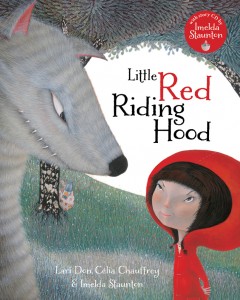 Little Red Riding Hood |
| Oct 04 |
Archive for the 'Research' Category
Filled under: Events, Maze Running, Monsters (defeating!), Novels, Readers, Research, Uncategorized, Writing | Thursday, October 4th, 2012 |
I visited Traquair Maze again last week, filming an interview about Maze Running. I’ve been to the maze several times now, the first couple of times to research the novel, then another couple of times for press and publicity things (research is far more fun!) But this time, something had changed.
We came round the corner of the lovely old house, lugging cameras and tripods and copies of the book, and we walked into a
BEAR.
A bear. Just standing there. Ignoring us.
It took a minute to realise that it was a statue of a bear. There were two of them: one bear near the corner of the maze by the house, the other bear near the entrance of the maze. And they were obviously permanent residents – there was even a sign saying ‘do not lean on the bears.’ It’s probably ok to feed them, or tell them stories, though!
They were lovely bears. But they annoyed me, because they weren’t there when I researched the book! So when I described Helen running round the maze, or Sapphire landing between the house and the maze, I didn’t mention any bears. And now someone reading the book who knows the maze, or someone who visits the maze after reading the book, might say: ‘How came Helen never saw those big bears?’ or ‘Why didn’t that writer research the maze properly before she wrote this book?’
I did research it! And if the bears had been there when I first visited, Helen would undoubtedly have used them in some clever way to defeat the Master.
But the bears weren’t there last year. So they didn’t make it into the book, and now the book is already out of date, even though it was only published a couple of months ago.
Does it matter? Is it just one of the risks of using real life places, that they don’t stay the same? It’s happened to me before though…
When I first visited Dunvegan Castle to case the joint for the break-in during Wolf Notes, there was a ‘prisoner moaning’ sound effect in the dungeons which sounded like a monster howling, so I put that in my book. When I went back to do an event about Wolf Notes, they had changed their sound track and the moan wasn’t there any more. (So I read a different bit that day!)
These changes in a location can make me feel like the world is moving my goalposts without telling me. And every time it happens, I think, ‘oh no, I should never revisit locations!’
I never regret using real locations, though, because I want the fabled beasts to have their adventures in the same Scotland we live in!
But sometimes these new discoveries at locations can enhance the book, in a way which is almost magical.
I researched Smoo Cave for Storm Singing in the winter, so there were no boat tours to the inner caves (that didn’t affect my research, because all the action happened in the outer cave and the first cave, which you can see from the viewing platform.)
I went back the next summer, to read the quest in the cave to a group of kids in the cave, and I went on the boat trip too. When the tour guide dropped bread in the water of the dark cave, where I had imagined a giant eel snapping at Helen’s feet, suddenly the water was alive with fish, snapping at the bread. That was a spooky and shocking realisation that what I had imagined – predators under the water – wasn’t very far from the truth!
Locations change, of course they do. That’s bound to happen if I use real life places. Sometime they change in a way which makes my research a wee bit out of date, and sometimes they change in ways which make the adventures seem even more true!
And I didn’t really get too annoyed about unexpected bears. Especially when they were happy for me to read Maze Running to them…
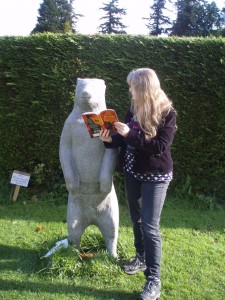 Reading Maze Running to a Bear 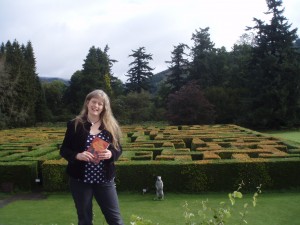 Unexpected bear, at Traquair |
| Aug 31 |
Archive for the 'Research' Category
Filled under: Picture Books, Research | Friday, August 31st, 2012 |
Do you think children’s writers just sit at a desk and write? It’s much more fun and much dafter than that!
If you read my blog regularly, you’ll already know that children’s authors have to do some fairly strange things. But recently, my life has been getting even weirder. You can now find me on YouTube, flicking peas off the top of melting ice-cream, right across my own kitchen.
I spent a whole day with Chani and Benedicte from my publishers Floris, filming peas floating in glasses of orange juice and peas sitting on top of ice-cream… Why? Because they thought it would be fun for people to see me act out the story of Orange Juice Peas, my new picture book.
I’m used to reading the story out loud, but I’m usually in a classroom, library or theatre, so I don’t often have a fridge, a freezer and a bag of peas handy. But we thought that if we filmed it in my kitchen, we could do the whole thing for real. So we did. And it was very odd, and huge fun, and I suggest you have a look and let me know what you think!
But that may not be the oddest thing I’ve done while researching, writing or promoting my books. I’ve also:
– allowed a fairy to guide me through a maze;
– let the BBC get me lost in the very same maze;
– told a Viking legend in a cave;
– walked sunwise round a small hill in the Eildons looking for a magic door, on the same day that I’d been threatened by the Faery Queen on Twitter;
– shouted “Bottom!” loudly in the poshest, quietest bit of the Edinburgh Central Library;
– read from Wolf Notes in the gardens of a castle, rather than indoors, because the staff were a little nervous that the relevant chapters were about breaking in and stealing from their castle;
– phoned up a university to find a vet who could tell me how to heal an injured dragon;
– contacted a tropical fish society to ask about mermaids’ tails;
– tried out some exotic herbs and spices to find out what a witch would use to flavour the children she was going to eat;
– clambered along a clifftop in a howling gale;
– timed a frond of bracken travelling down seven waterfalls, in the Pentlands, on Christmas Eve;
– waggled my bottom at children on a regular basis, which may be why many infants now call me The Big Bottom Lady (because of the book title, obviously, not the size of my bottom!)
– learnt how to read (some) cuneiform writing, and invented my own Sumerian monsters;
– run down the same hill as Tam O’Shanter, like I was being chased by witches, when in fact I was being watched by puzzled American tourists.
Those are some of the daft and dangerous things I’ve done so far as a writer. I wonder what I’ll do now, to research my next book?
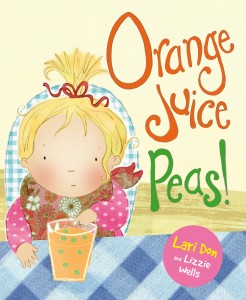
|
| Jul 26 |
Archive for the 'Research' Category
Filled under: Events, Maze Running, Myths, legends, folklore, Readers, Research | Thursday, July 26th, 2012 |
I’m not long back from the most memorable and fun Maze Running event I’ve done yet.
I do thoroughly enjoy chatting to kids about books in libraries and bookshops, but the kind of event I love doing most is taking books and readers out into the real world, to talk about research, inspiration and imagination in the legendary locations where I actually set my adventures.
And yesterday, I climbed to the top of Dunadd, a rocky hillfort in Kilmartin Glen in Argyll, and read an ambush scene involving minotaurs, dragons, wolves, swords, axes, mice and some very odd rope, to more than thirty people in the bright sunshine, including a mix of readers from 6 year old girls to 13 year old boys.
It was wonderful! There is a tiny natural amphitheatre right at the top of the hill: a curve of Iron Age (I think) wall where I put my books and bottle of water, facing a slope of grassy hillside where all the readers and their parents sat. We were just above the carved footprint where Scottish kings were crowned many years ago, the footprint which was at the heart of the magic which drew me to set a scene at Dunadd.
And the audience were all fantastic! Dunnadd is, in the nicest possible way, in the middle of nowhere. Everyone had had to drive a significant distance to get there (one family had driven for at least 90 minutes to attend the event), everyone had to wear sensible outdoor clothes, and listen to a health and safety talk at the bottom, then climb up a rocky steep path to get to the top. So they were REALLY keen. That’s the best kind of audience!
Some of them even brought their dragons. A head count would have suggested five dragons, but as the orange one was two-headed, there were really four different cuddly or plastic dragons at the top of the hill. And someone brought a large white unicorn, which given the rescue scene at the start of Maze Running, was very appropriate!
So, surrounded by the sunlight and the rocks, with everyone having a view of the wonderful Scottish landscape all around us, I read the start of the quest on Dunadd, pausing a couple of times to point out that the dragon was parked just behind the lady from Kilmartin House Museum, then to say that the minotaur was holding his blackhandled axe in amongst the parents at the back and that the grey-legged faun was being nasty to a mouse where I was standing. It’s amazing to read a scene out loud exactly where I imagined it happening. It brings the characters and action to life, in a way which is almost magical.
Then I encouraged the children to imagine their own quests and adventures on Dunadd. We had a few dragon ambushes, some very sneaky treasure hunting, and a really unusual way of hiding a centaur. Everyone’s imaginations were sparking in the sunshine!
Then I told a myth which had come over to Scotland from Ireland, just like the kings of Dalriada who were crowned on Dunadd. I chose that myth because it allowed me to stab the wee boy reclining on the grass slope at the front with a particularly nasty spear.
But my favourite moment was when I described how the silent ambush tactic used by the minotaur was inspired by a snake I had seen on Dunadd on one of my research visits. When I said “snake” everyone in the audience jerked backwards, half stood up, or checked the grass under their bottoms, and they all looked extremely worried for a moment. (The adults looked much more worried than the kids!) So I had to say that I knew what kind of snake it was, and it was NOT poisonous, and anyway, we had seen it way over on the other side of the hill LAST YEAR.
No-one had worried about a fictional minotaur in their midst or a dragon behind them, but almost everyone reacted very speedily to a passing mention of an innocent snake! That’s something which never happens in a bookshop.
In previous years I’ve read from First Aid for Fairies at Tam Linn’s Well, Wolf Notes outside Dunvegan Castle, and Storm Singing in Smoo Cave, all of which were wonderful locations, but I think reading from Maze Running on Dunadd was my favourite outdoor event so far. Partly because of the incredible weather, partly because of the snake reaction, but mostly because of the huge effort all the readers made to get there and the wonderful dragons and ideas they brought with them.
Books. Hills. Kids. Stories. I have the BEST job in the world!
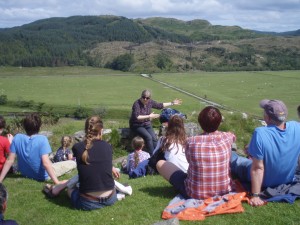 Maze Running event on Dunadd |
| Mar 05 |
Archive for the 'Research' Category
Filled under: Events, Research, Schools, Writing | Monday, March 5th, 2012 |
I’m in the middle of lots of school visits around World Book Day, which you’d think would only last a ‘Day’ but seems to last at least a fortnight!
One of the best things about lots of school visits is lots of great questions from pupils. I answer questions at the end of every session, so I probably answer dozens of questions a week, possibly even hundreds a week at this time of year.
What amazes me is I’m still being asked new, original and surprising questions. There are questions which come up pretty much every time (when did you become a writer, how many books have you written, what’s your favourite book?) but I’m impressed that kids are still asking questions which I’ve not heard before, questions which make me think hard about my writing process.
The best question I got on World Book Day was from a pupil at Stockbridge Primary in Edinburgh, who asked: “What’s more important for a writer, imagination or knowledge?” I thought that was fascinating, because creative writing teaching often concentrates entirely on imagination, but a story won’t be convincing if it’s full of errors. On the other hand, if you have lots of facts, but no flash of inspiration bouncing off the facts, then you haven’t got a story. I came to the conclusion that both imagination and knowledge are vital, but that I start with imagination then fill the gaps with research. New writers are often told to “write what you know” but if I only wrote what I know, then I’d write boring books about making packed lunches. Instead I allow myself to imagine stories about injured centaurs or living rocking horses, then I research the time or place or biology and write about the NEW stuff I know.
Another question I was asked recently at Westercommon Primary in Glasgow was: “How do you know when a story is finished?” That’s a brilliant question, because we spend a lot of time thinking about good ways to start stories, and we may not think hard enough about how to finish them. I explained that my stories are finished when my characters have solved the main problem. Because it isn’t a story without a problem: a mystery, a quest, a baddie to be defeated. You spend the story trying to solve the problem, and once it’s solved, the story is over. Boom. The End.
A pupil at St Mary’s in Glasgow asked: “When you reach a certain age, will you want someone else to continue your work?” That made me laugh, because I never want to reach a certain age… But the serious point we discussed was whether someone else could carry on my work, indeed any writers’ work, or whether it’s individual to us. If a person’s life work is campaigning for animal rights, or planting a forest, or running a jam factory, someone else probably could continue it, but no-one else could write my stories. Not exactly the way I write them. Because my stories come out of my thought processes, my experiences, my way of research, and my own individual (hard to explain and impossible to replicate) flashes of imagination. That’s the magical thing about writing: we all write differently. So no, if I ever reach a certain age and stop writing, that will be it. No more Lari Don books. I’d better get a move on and write another one while I still can!
I’ve been asked other fascinating questions in the last few weeks, but my author events are noisy and fast moving, so I don’t often remember the exact questions afterwards. If you asked an original question which I’ve not mentioned – sorry!
And if you can come up with a question which you think no-one has ever asked me before, please do ask it! You don’t have to wait until next World Book Day or until I visit your school, just post a comment here or email me on: info@laridon.co.uk
And if any other writers want to share the best or most original questions they’ve been asked, I’d love to read them!
|
|
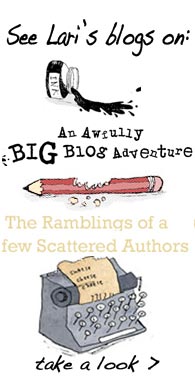













Recent Comments